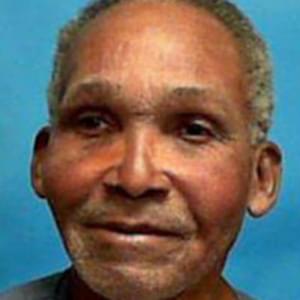Robin Lovitt is scheduled for execution on July 11 in Virginia despite doubts about his guilt and the state’s weak and circumstantial case against him. Lovitt’s attorneys maintain that DNA testing of evidence in his case would prove that he is not guilty of the 1998 murder of Clayton Dicks, but the tests are not possible because a court clerk mistakenly destroyed the evidence. Columnist Margaret Edds of the The Virginian-Pilot recently wrote about the upcoming execution and the doubts that remain:
The scheduled execution of Robin Lovitt on July 11 spurs the latest dust-up in the state’s intensifying scrutiny of capital punishment.
At issue is whether it’s proper to execute a man, one who proclaims his innocence, even though a clerk mistakenly destroyed evidence in the case.
…
For Gov. Mark Warner, who - barring a U.S. Supreme Court reprieve - must weigh a clemency petition as the execution approaches, the clerk’s error forces Solomonic judgments:
How certain is Lovitt’s guilt?
What difference, if any, would it make if all of the unresolved questions about the DNA evidence were decided in Lovitt’s favor?
…
Two witnesses who walked in while the attack was under way, and then left to call police, couldn’t identify Lovitt. One said at trial that he was 80 percent sure Lovitt was the man. Closer to the actual event, the same man said he wasn’t certain.
No fingerprints from Lovitt were found on the alleged murder weapon or at the crime scene. None of the victim’s blood was found on Lovitt’s clothes. (More about that later.) The primary person linking Lovitt to the crime was a fellow inmate, who, it turned out, had testified in several other trials. The label “jailhouse snitch” comes to mind.
…
It’s fair to say that discussion of DNA occupied a relatively minor portion of the overall trial testimony. But related comments weren’t negligible either.
Two issues emerged. First, a spot of blood on the scissors (used as the murder weapon) clearly belonged to the victim. A second stain, an unidentified substance, largely matched Dicks also. But one faint genetic marker, identified by the number “17,” could not have come from him.
The state analyst revealed that Lovitt had a “17” as 1 of 2 genetic markers at that point on the gene.
Did the jury see the link as significant? No one outside the jury room knows. Could an updated test have ruled Lovitt out altogether as a contributor to the stain? Yes, potentially.
At one point, the prosecutor called the 2nd stain “not a big deal.”
Later, however, she observed that it could have come from sweat and that “you know when the defendant arrived at [his cousin’s house] he was sweating.”
And further, “What was on there was just one little piece, and it told you that there was an allele No. 17. And what you know is that the defendant has an allele No. 17.”
Ditto for a discussion of blood found at the waistline of Lovitt’s jacket. The state lab report was marked “inconclusive” as to the source of the blood. But that didn’t stop the prosecutor from intimating that it belonged to Dicks.
“Certainly it [blood from the victim] could have gotten on his clothing, and certainly there is blood on the jacket in the stomach area,” she noted in closing remarks.
In fact, however, lab notes strongly suggest that the blood actually belonged to Lovitt. An updated test almost certainly could have answered the question. Frankly, that’s information an appeals court or the governor should have had.
After reviewing various documents, here’s one person’s opinion:
Could a jury reviewing the evidence against Lovitt have reasonably concluded that he committed the crime?
Absolutely.
Is the evidence against him foolproof?
No.
Might updated DNA testing have clarified the matter somewhat?
Yes, potentially.
Should he then be executed?
For opponents of the death penalty, such as me, that’s not a hard call. Certainty ought to be a given. The real challenge is to the majority of Virginians who favor capital punishment.
For them, when it comes to taking a life, how much doubt is acceptable? How much error?
Given all we have learned about the reality of wrongful convictions in seemingly airtight cases in recent years, is a “reasonable” execution still good enough?
(The Virginian-Pilot, July 3, 2005). See Innocence and Clemency.




